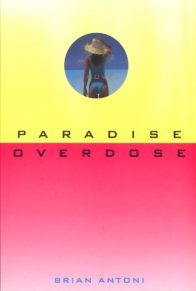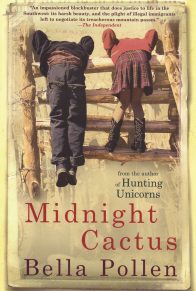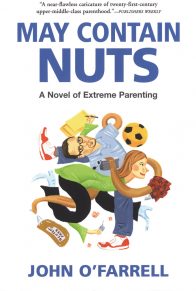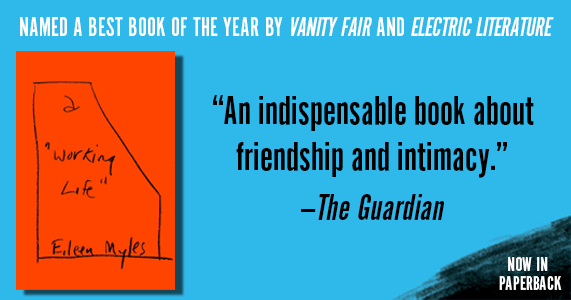A: Well, I hope almost everyone will like this book for three reasons. First, the time and setting are unique and exotic and interesting to most people I talk to. I am constantly asked “What was it like to be in Miami Beach when it started it’s comeback?” or “Is it really like on Miami Vice?” or “Don’t you feel LUCKY?” There is a real curiosity about the place based on its exotic reputation, history, and prominence in the news. The second reason I hope that a lot of people will like this book is because the central stories are all very universal: love, sadness, friendship, passion, vice, tragedy, great movements, community activism, etc. It’s all there in the book, stuff everyone can relate to. And while people love to get an inside peek at exotic and glamorous places and people, I think they also like to see that even the rich and famous and gorgeous are just like us in the ways that count. Emotions don’t vary much by wealth, residence or level of beauty. You can still love, hurt and die like everyone else. In my book, for example, there is a world-famous fashion designer who has fallen for a penniless model. Not just fallen in lust mind you, but in love. But despite his wealth and power, it doesn’t matter, he doesn’t get what he wants.
The third reason I hope people will like the book is that they will like the characters. For the most part, I liked them too. I personally find it much harder to write about people I don’t like. So I write about people I like and I hope the reader will like them too.
Q: You seem to have nailed the era and the place perfectly. Are you a Miami native?
A: No, my parents are from Trinidad and we moved to the Bahamas when I was a baby. We always had an apartment in South Florida so I spent a lot of time in Miami. My favorite thing was the neon. I thought it was magic. We had no neon in the Bahamas. Then I went to high school in Ft. Lauderdale. So, I guess I am half a native.
Q: So when did you come to Miami?
A: I bought a home and my first apartment building in the center of South Beach twenty years ago. I named my home Chateaubrian and my apartment building was called the Venus De Milo Arms.
Q: What brought you here to stay?
A: The first time I walked up Ocean Drive, I fell in love. I was in transit from the Bahamas to London and had some time to kill, so I rented a car and somehow ended up on South Beach. I parked around First Street and started to walk and by the time I reached Lincoln Road I knew I had to move here.
Q: What attracted you to the neighborhood?
A: I don’t know exactly what it was. It is like trying to remember the first time I saw a lover. I remember seeing an old lady with the most beautiful wrinkles and she was wearing a pink bathing cap covered in pink flowers, like her head was wrapped in cotton candy. I remember she was caressing the arm of a skinny old man and I remember following her fingers to see a tattooed line of numbers on his forearm. I remember feeling a jolt in my heart as I looked away, out to the sea. Then, before my eyes, like a fantasy, a woman emerged from the water and in the sunlight, she looked golden. She was naked except for the tiniest line of G-string. Then two men in matching Speedos walked toward her and their bodies were so built and hairless they looked like huge erections. They both kissed the golden woman on both cheeks. I remember running and diving in the Ocean and swimming out as far as I could and looking at the string of amazing rotting deco buildings, like incredible cubist sculptures. I walked back to my car, got my bags and checked into the first hotel, and I never left.
Q: Where did you stay? What did you do?
A: I checked into the Leonard Beach Hotel, a stunning Mediterranean Revival building, all crumbling breezy courtyard and Spanish tile. I was given the AIDS room. I later found out that artists were each provided a budget and a free stay in exchange for decorating the rooms. The walls were covered in bright orange flames and over my bed was a warning to wear a rubber and over the toilet was a count of the people who had died of AIDS to date. I remember at that time I knew very few people who had died of AIDS. A German developer bought the hotel and spent millions turning it into a club called Hell, which he kept open for a couple of months—and then he demolished that incredible building.
Q: What motivated you to write this book?
A: Well, I remember going to Puerta Sagua and sitting at the lunch counter and I noticed all the hippest young people and old Jewish retirees, and they were wearing the same style of clothes. The young people were buying the old people’s clothes from the thrift shops. Both groups had come to Miami to die, the old people and the young people. It was the time when people with the AIDS would sell off their insurance and then come to South Beach to party until they dropped dead. All these strange beautiful families were forming in these old Deco buildings that developers were trying to destroy so they could build high-rises and the old people were taking care of young people and young people were taking care of old people. I remember watching my mom sit all day holding the hand of George, a new family friend, as he died of AIDS. In his dementia, he thought my mother was his mother. His family had turned against him when they found out he was gay and had AIDS.
I remember going out that night to try to forget the pain. I ended up in Chris Blackwell’s apartment in the Marlin. I was really wasted and Madonna walked in with her friend Ingrid Casares and they walked up to me and my friend Tom, a nightlife columnist, and asked us where they should go to party. It was so surreal. Madonna had just bought a house in Miami. At that time she was like the incarnation of fame itself. It was that night that I started writing South Beach: The Novel. I knew someone had to get this down and it might as well be me. I knew that South Beach would go from a Cracker Jack box of people who had no place else to go, to a floating menagerie of people who could go anywhere. And I remember being very afraid.
Q: Your first novel, Paradise Overdose was apparently heavily autobiographical. South Beach: The Novel seems to also have an awful lot of Brian Antoni in it. A pattern?
A: Well, I don’t think about this. But they say to write what you know so it is natural to write about your own experiences in fiction. I remember the gossip columns, like Page Six, picked up on that in Paradise Overdose and speculated on what was real and what wasn’t. South Beach was truly stranger than fiction. I just lived there and the material came flooding in like a tidal wave. I also did lots of research, going undercover as a doorman at hip clubs. I even had the pleasure of keeping Charlie Sheen outside the door of Fat Black Pussycat because he didn’t know the password. I also worked undercover as the bathroom attendant at Love Muscle, traveled to Havana Illegally and interviewed many holocaust survivors. In South Beach: The Novel, I had to tone down reality. My agent and my editor kept telling me that people would never believe what I was writing, that it was too much. I kept telling them, I had seen this before my very eyes. Maybe I should release an original X-rated version.
Q: South Beach: The Novel is filled with fine detail and nuanced insider observations. A lot of it is cynical, and yet you are almost tender about the place. Is that how you feel personally?
A: Exactly! This book is a love/hate letter to South Beach. I want to kiss it and slap it at the same time—especially what it has become. When you participate in the formation of a place, witness its rebirth, it becomes a part of you. South Beach to me is the people, all the amazing friends that moved here in the early days with a dream but have now been forced out. That is why I included all the names at the end of the book. These are the people that made South Beach. I went through all the lists of people I invited to my parties over the years.
Q: I have heard about your parties. Can you tell me about them, any special moments that you remember?
A: Well, I started giving the annual unofficial party for the Miami International Book Fair. The party has grown so much that at the last one over a thousand people attended throughout the night. My Book Fair party is for people who write books and people who don’t even read them. I love to mix all kinds of people up. I remember many special moments. At one party George Plimpton was reading from a little book of animal stories he had written called Pet Peeves. No one was paying attention but he kept on reading like a trooper. I realized that he couldn’t get the crowd’s attention because Candice Bushnell had stripped down to her underwear and dove into the pool with the band Space Hog, who were totally naked. I remember at another party my brother and I gave a dinner for three Nobel Laureates, including Derek Walcott, Milosz Czeslaw and Octavio Paz. The waiter, who was from Mexico, got so excited when he recognized Octavio Paz that he started to cry. Also, I remember a party I gave for Will Self during the ABA in Miami. Morgan Entrekin, the publisher of Grove/Atlantic, was being followed by a crew from 60 Minutes. Suzanne Bartsch was also there with her troop of drag queens and club freaks and 60 Minutes spent all night trying to film Morgan together with them. I thought, this guy is never going to publish anything I every write after this. But I was wrong. I remember a party I hosted for the American Library Association. Those librarians raised hell. I’m recognized all over the world for my parties. I was just in Shanghai and a Chinese guy working the door of a club I went to said, “Hey, didn’t I jump in your pool at a party at your house in Miami?”
Q: Speaking of your home, I have read about your house in several different books about Miami. Your style can only be described as—and this is an understatement—eclectic. A mix of classics and Florida kitsch. It’s as if Eames and Starck set up shop in one of those Florida roadside tourist traps filled with alligator heads and coconut monkeys. The book and your house are cut from the same mold. Is that really Brian? Crazy eclectic.
A: If you go back to Trinidad and mention my last name, everyone will tell you all Antoni’s are crazy. As far as eclectic, I am all over the place. I love design and I love turning it on its face. I like objects with a sense of humor or that tell a story. My design is a moving narrative. I was always jealous of my brother and sister because their interests were so defined and focused. My brother always wanted to be a writer and my sister always wanted to be an artist.
Q: Speaking of your family. They are almost spooky talented. Your sister Janine is one of the world’s foremost conceptual artists and your brother, Bob, is a celebrated novelist. Was there something in the water in the Bahamas when you guys were growing up?
A: Well my sister won a McArthur genius award and my brother won the Commonwealth Prize for best first novel. I won a third runner-up prize in backgammon at summer camp. When Adaptation came out, people called and said, there is a movie about you and your brother. He is literary, got a PHD from the Iowa Writer’s Workshop. And I taught myself to write and am very commercial, I hope. Then when the Royal Tannenbaums came out, I was told they were just like our family. One thing we all three have in common is that we are dyslexic. We all failed the second grade because we could not learn to read and write. The nuns told my parents we were stupid. The other thing we have in common as a family is we all seem to use the family for inspiration. My brother wrote a book called My Grandmother’s Erotic Folk Tales, in which he retold my grandmother’s stories. My sister turned my Mom into my Dad and my Dad into my Mom in a photographic piece called Mom and Dad. Both my novels have artists as one of the main characters. I did not use any of my sister’s art in South Beach: The Novel because she got so pissed off that I used some of it in Paradise Overdose.
Q: Miami is also arguably America’s most exotic city: Discuss
A: I have always thought Miami was America’s most exotic and “foreign” city. A portion of it has to do with the very rich cultural mix. The place has a real Latino flavor, though in some ways that is quite recent. The earliest pioneers were all the railroad folks, and assorted Northern tourists who just fell in love with the warm tropical weather and never went home. Over the years, the original pioneers were leavened by a fascinating mix of holocaust survivors, gangsters, and Cubans—along with a large cross-section of the rest of Latin America, and most recently a very significant gay and lesbian population. On top of that, you have a real tropical climate. As someone raised in the Bahamas, I can tell you emphatically that the climate just gets into your bones. When my friends come down from NYC, the tropical climate seems to melt their brains. They turn into sailors on leave. In NYC they want to talk, here they want to take drugs and get laid. They become mellower and slower-paced and horny. It might be simpler to just sling some gigantic red velvet ropes over the causeway and hang an overgrown disco ball over South Beach and give people the drug and sex act of choice as they enter the neighborhood. In some ways, Miami is America’s very own Caribbean island, but with reliable plumbing, good roads, great shopping and a decent corned beef sandwich.
Q: Is the place as weird as it seems to “Middle America?”
A: Yeah it really is. I live in South Beach more than half of the time and it is a never-ending menagerie. It’s why I like it there so much. On a single block, in a single 5-minute time frame, you might see some Anglo kids skateboarding, an Hassidic Jew in a black hat, an impossibly tall black drag queen in a neon green mini-skirt, a young Latino couple in love, a gaggle of Lilly white English tourists fresh off the plane from Manchester, a fashion model and who knows what else? There are foods and forms of entertainment found in South Beach that you just don’t see anywhere else. You either love this sort of thing or you hate it. I think most people are at least a little adventurous, so they love it in little bits, maybe for a vacation or maybe in a book. Full time is a different story I think, but either way this is definitely NOT middle-America.
Q: Why does the time and place fascinate us so much.
A: It fascinates simply because it is so different and at the same time different plus LOUD. We are humans, we evolved to like new stuff, novelty, something different. And not only is Miami DIFFERENT, it’s really so much bigger than life too. The temperatures are hot, the sun is intense, the colors are bright, the rhythms are foreign, the accents are strange, there’s intrigue in the air and so on. Not only do we see people and things here that we won’t see in Milwaukee or Denver or Buffalo, but we see SO MANY people in one small compact place. There is also a sense that there is a different code here. More is tolerated. People can be eccentric or different or even weird. It’s not simply tolerated, it’s actually appreciated. Although Las Vegas is famous for the expression “what happens in Vegas stays in Vegas” you could have said that about Miami a long time before Vegas existed, and it’s still true today. People come here to start new lives and new adventures and sometimes JUST TO BE THEMSELVES. The city has a lure, for sun worshippers, Latin’s, gays and lesbians, northerners who dream of a retirement in the sun, paparazzi, etc. And of course there is also the drug trade, the fashion industry, the sex, the music, silly amounts of money thrown around, the fast life, etc. How many places in the world can you see two Ferraris involved in one accident? South Beach is like all the best articles in People Magazine and the National Inquirer and Vogue all rolled into one small island a few square miles in size.
Q: If we send our readers to South Beach, what must they absolutely NOT miss.
A: Every visitor needs to do at least seven things: 1. Walk up and down Ocean Drive on the beach side and look at the bathers, the colorful lifeguard stations and the incredible row of pastel art deco hotels that face the ocean. If you do that, you will understand half of what intrigues people about this place. 2. Stroll up and down Lincoln Road pedestrian mall one Friday night. You will see one of every type of human on earth and a lot of cool places to eat and shop as well. 3. Even though it’s not on South Beach, go see Vizcaya, an old house that’s now a museum, on the mainland. That’s a whole different kind of wealth. In some ways, it’s still here, but you won’t see it. It’s hidden away these days. 4. Also have some genuine Cuban food. Don’t worry about the menu, just tell the waiter to bring a traditional meal, but don’t forget a Cuban coffee and tres leches for dessert! 5. Drag yourself to an after-hours club on Washington Avenue at 4 am on a Saturday night and see what the cat dragged in. Just follow the club kids sucking lollipops and chugging water. 6. Go take a look at the Delano Hotel. It’s a little bit of old South beach deco and a little bit of magic. 7. Come skinny-dipping with me in my black pool at midnight and stare up at the moon over Miami through the canopy of palm fawns. Trust me.
Q: At the end of the day, for all the charm and mystique, are the people of South Beach REALLY any different from anyone else, or are we just the same Joe Schmoes underneath?
A: Yep, you know what? We really are all just Joe Schmoes at the end of the day. I have been very lucky in life, growing up with privilege. I have had the opportunity to know a LOT of famous and glamorous people and I can tell you that, beyond any doubt, though they may have 10,000 thread count sheets and fancy cars, they love and lust and hurt and bleed and die just exactly like everyone else. I can also tell you that wealth and beauty do NOT make a person interesting, or at least not for more than an hour or two. There are interesting and curious people all around us all the time, they just don’t necessarily wear Dior. They might be small-time reporters, starving artists, drag queens, holocaust survivors or even trust fund babies whose trust funds have vanished. You just never know….
Q: Any message buried in the book?
A: Well, there are many. I really am trying to show tolerance, show how people that might seem so strange on the outside are all the same on the inside. I want people to appreciate differences, and to treasure the old, in people and in buildings.
Q: The period when the book is set ended 6-7 years ago. Will there be a sequel.
A: No, definitely not. I really think what was so unique about South Beach is over. It was the transformation that interested me. I was watching MTV’S Sweet Sixteen while I was drinking a SOBE soda and all those girls had these elaborate parties with VIP rooms and red ropes and I had to laugh and think, the whole country has gone South Beach.















